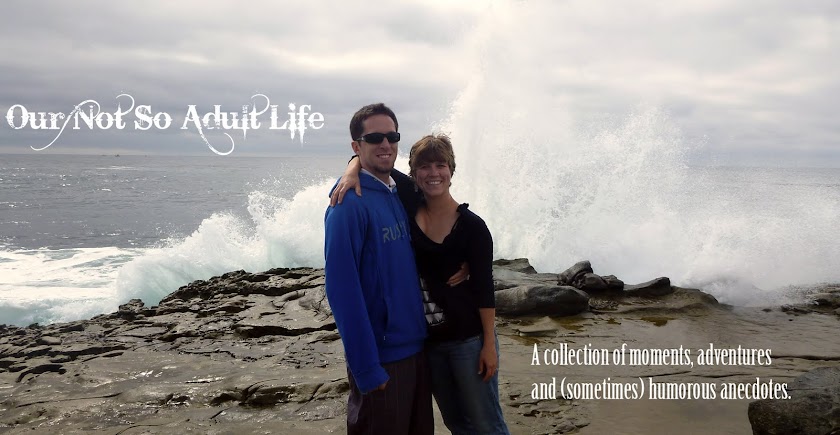I used to know the basics of sewing with a sewing machine. They were:
1. Put fabric under the needle
2. Push the foot pedal down
3. Sew in a semi-straight direction
4. If anything goes wrong, call Mom
These skills were used to create some real sewing gems, including a blanket made of mismatching left-over fabric, a lumpy pillow, and stunning outfits.
 |
| An example of one of my many stunning outfits |
However, I have not sewed anything in many years. This did not seem likely to change until I received a Singer sewing machine this Christmas from my mother-in-law. Upon learning of my gift, my mom bought me a book to teach me to sew—Stitch by Stitch: Learning to Sew, One Project at a Time. The book is laid out so that you start with easy projects learning the skills you need in order to make the more complicated projects later on in the book. In theory, I agree with this idea 100%. In practice, however, I’ve discovered that I first have to make several boring projects before I can make fun things like throw pillows and skirts.
 |
| My new sewing machine |
In Chapter 1 of the book I learned about the overwhelming number and types of tools that are used in sewing. I bought with the items listed as essentials (such as a seam ripper, measuring tape, and a pincushion) but have not yet opted to buy the optional, suggested items (such as a cutting mat and acrylic ruler). I learned that nice sewing scissors are expensive, which is why my sisters and I got in trouble when using them to cut construction paper, doll hair, and cardboard (although in our defense, the scissors did a really nice job on all of these). Also, to my surprise, pin cushions are still in the shape of a tomato. I now own a matching one to my mom. I also picked out a blue and brown checkered flower pattern fabric for my first sewing project.
In Chapter 2 I had to learn how to turn on the machine (check—easy, peasy), thread the machine (check—been there, done that) and wind the bobbin (wait—what?). Apparently, I had always relied on my mom to do the winding the bobbin thing, so it was a brand new adventure. After making a huge tangled mess of thread twice, I finally successfully wound my first bobbin and was ready to move on.
In Chapter 3 I learned all about different types of fabric. I also learned that you have to use an iron a lot in sewing—and I can now distinguish between pressing (lifting the iron up and down) and ironing (moving the iron in a side-to-side direction). I don’t like either. Also in Chapter 3 I was instructed to make a sampler of the different stitches my machine can do. Realizing that my particular machine has 99 different stitches, I decided to sample a few of my personal favorites. The first sampler had to be thrown away after it got stuck in the sewing machine, and I had to wrestle it out through pulling and hacking with scissors. The second sampler was much smoother.
 |
| My second sampler |
Finally, in Chapter 4, I was ready to start my very first sewing project as an adult (drum roll please): “Fancy napkins with mitered corners”. Now, I know I give off the impression of being very fancy and formal, but I only use cloth napkins at nice restaurants. Therefore, this project did not capture my imagination. But, the author insisted that I needed to learn the skills of stitching in a straight line, mitering corners, pivoting, and edge finishing. So, I stitched in (semi) straight lines, mitered corners, pivoted with ease, and finished the edges, and I am now the proud owner of four very fancy cloth napkins.
 |
| The final product! |
The author also assures me that I will never go back to paper napkins again, but since Sean and I rarely use napkins anyway (and when we do they are paper towels), I’m not convinced.
Next project: Picnic place mat with bias-bound edges.





